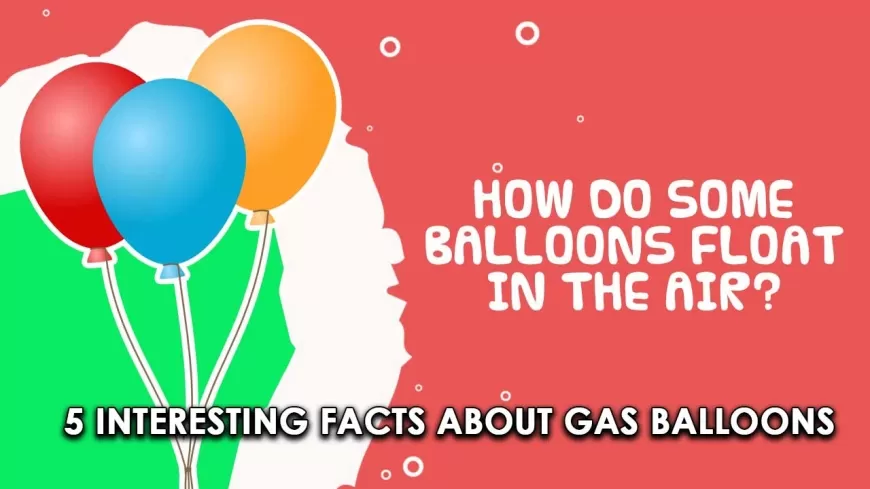5 Interesting Facts About Gas Balloons | Why Do Balloons Fly Up?
Gas balloons are more than just colorful decorations; they’re a marvel of science. Learn 5 fascinating facts about them, such as their lifting power (6,000 balloons can lift an average person!), behavior in cars, and why they don't float on Mars. Plus, find out how helium changes your voice pitch. Perfect for science enthusiasts and curious minds!

5 Interesting Facts About Gas Balloons
We’re all familiar with gas balloons, often seen in events where thousands are inflated to brighten up the atmosphere. But have you ever wondered how far these balloons can actually fly? Do they float into space, or do they come back down after reaching a certain height? Let’s uncover some intriguing facts about gas balloons!
How Are Gas Balloons Made?
Gas balloons are surprisingly simple to make. Unlike regular balloons, these are filled with gases that are lighter than air. Gases such as helium, hydrogen, or acetylene (carbide) are commonly used because their low density allows the balloons to rise.
Why Do Gas Balloons Fly Up?
The secret lies in the gases used. Helium, hydrogen, and carbide gases are significantly lighter than the oxygen and nitrogen present in the atmosphere. This buoyancy effect allows the balloons to rise effortlessly into the sky.
Interesting Facts About Gas Balloons
Fact 1: Lifting Power
If you weigh between 70-75 kilograms, you would need approximately 6,000 gas balloons to lift you off the ground. Why? Because a single gas balloon can lift only around 14 grams. Mathematically, to lift 75 kg, you’d need 5,357 balloons.
Fact 2: Balloons on Mars
If you were to take a gas balloon to Mars, it wouldn’t fly. The Martian atmosphere contains gases lighter than helium or hydrogen, causing the balloon to stay grounded instead of floating.
Fact 3: Behavior in a Moving Car
Tie a gas balloon inside a car, and you’ll notice something fascinating. When the car accelerates suddenly, passengers are pushed backward, but the gas balloon moves forward. This happens because helium gas is much lighter than the surrounding air, reacting differently to changes in momentum.
Fact 4: Voice Effect
Inhaling helium from a gas balloon can make your voice sound hilariously high-pitched. This happens because helium is less dense than air, allowing sound waves to travel faster through it, altering the pitch of your voice.
Fact 5: Fun with Numbers
Gas balloons have been a source of joy and curiosity, especially in experiments to calculate their lifting power or analyze their behavior in different environments.
These were just a few fascinating insights about gas balloons. We hope you enjoyed reading this article. If you found it informative and entertaining, don’t forget to share it with your friends and family.
Want to contribute?
You can also send us your blog. Click Here to Submit Your Blog
What's Your Reaction?


























































